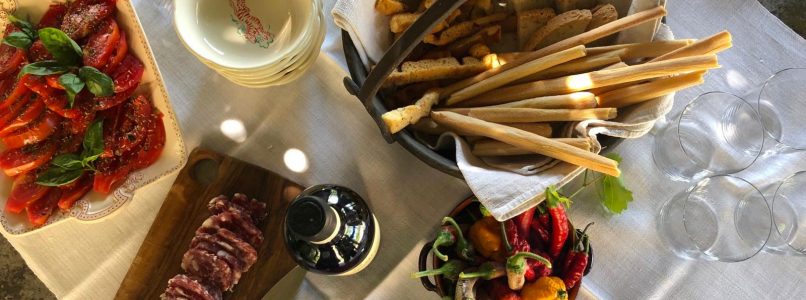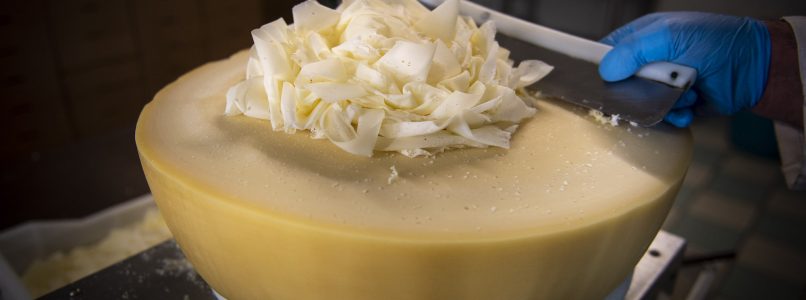On the hills of San Damiano d'Asti there is a company that has been dedicated to the production of wine for more than 500 years, Torrazzo Nuvoli. For more than 26 generations the company has been managed independently, with important choices for the production and marketing of wines and products, with an innovative spirit and respect for tradition.
The vineyards extend on the steep clayey limestone marl hill of the Torrazzo for about 5 hectares with a south and south-east exposure, perfect for this grape variety.
Since 2011, the winery has embarked on the path of organic farming, an important decision, not only out of respect for the environment and its times, but also for the desire to safeguard this small wine heritage for future generations; in production they totally exclude the use of herbicides, pesticides and chemical fertilizers, exploiting the natural fertility of the soil.
History
Torrazzo is not only synonymous with Barbera d’Asti, but it is a story that begins in 1223 with the construction of the Tower of Marcellengo, with bricks made and fired on the spot. Today the tower is the only visible medieval vestige left after the destruction of the annexed castle in the battle of Roccavione in 1274. While the tower was maintained because it represented an important lookout point, the walls of the castle were knocked down from the steep Torrazzo hill. and still today there are large blocks underground in the vineyards.
The wines
At Torrazzo Nuvoli they produce Barbera d’Asti Docg organic in purity, with selected grapes that come exclusively from the estate's vineyards; the grapes are harvested by hand and vinified in the ancient cellars under the castle. The traditional barbera is aged for at least 9 months in large oak barrels, the upper one at least 24 months and the last born, LOLA, is aged in cement only and represents a more modern interpretation.
Gastronomic trails
Even for a historic company like Torrazzo Nuvoli, the long lockdown has created many problems, somewhat reducing the many activities with Italian and foreign tourists, including visits and tastings. Fortunately, an interesting collaboration has developed with gastronomic trails; young company that has been working in the area for a few months, presented in early July.
The idea of the Gastronomic Paths was born from the desire of chef Diego Bongiovanni to enhance the regional territory starting from local and quality agricultural productions, sometimes little known companies, but which constitute the real fulcrum of the local agricultural economy and the origin of all the ingredients that the chef uses in his most authentic and traditional cuisine.
Tours
Guests will always be accompanied by an ecotourist guide who, in addition to illustrating the naturalistic and artistic beauties encountered on the way, will also have the task of emphasizing the strong link between Piedmontese territory and traditional gastronomy. For example, through the description of the agricultural landscape, the methods of using local raw materials in the typical cuisine and the tasting of indigenous products and wines directly in the farms along the route.
Itinerary
The guys from Sentieri Gastronomici suggest us a beautiful e-bike itinerary, through woods, hazelnut groves and vineyards: San Damiano, e-bike tour.
"We will start from the headquarters of the Colline Alfieri Regional Enoteca and cycle towards the Agriturismo Ca 'Colomba where, immersed in a sea of 360 ° open vineyards, we will have our first tasting of native wines, produced by the Franco Giacinto Winery that has been working for years and grows vines with passion on these hills, where Barbera d'Asti DOCG, Nebbiolo and Arneis are the masters. But it will already be time to take the road that for us will pass through the village and then climb the hill from the opposite side, continuing winding for a short stretch that climbs the first hill and reaches the ridge. The path then continues to the small church of San Luigi, located in the hamlet of the same name, where the eye sweeps over the green valley below, here the Ponte Ballerine farm will let you taste its excellent wines that will be accompanied by honey and hazelnuts . We will leave again, for the next destination, breathing in the scents of the season, which change every meter and taste of leaves, earth and fruit until we reach the crossroads of three local wineries: Pianchè, Ferrero Ettore and Val Serra, which will offer to guests the excellent wines of local production in front of a breathtaking view, which will make us enjoy a 360 ° view that opens to our eyes and that from the nearby village gathered in the valley, reaches, on sunny days, up to the crown of Alps. We will then return to the starting point, the Colline Alfieri Regional Enoteca, where we will live a new splendid experience through an excellent tasting of local wines, after which we will receive the well-deserved final picnic! .
What to do, what to taste, what to buy
Where to sleep / wines
Franco Giacinto's Farm, Agriturismo Cà Colomba, Fraz. Valmolina, 60 San Damiano d’Asti.
Wines
Regional Enoteca Colline Alfieri dell’Astigiano, piazza Libertà, 1 San Damiano d’Asti.
Bread, Breadsticks & Co
Panificio Canta, Frazione San Giulio 133, San Damiano d’Asti: specialty bread and breadsticks as they once were, excellent cold cuts and sausage tel. 0141977281.
Where to eat in San Damiano d'Asti
Osteria Vineria Madama La Barbera (excellent typical restaurant), Piazza Libertà, 1 / L San Damiano d’Asti, tel. 0141971842.
Conti Nuvoli di Grinzane, Torrazzo road 22, San Damiano d’Asti (AT).
Visits to the cellar of the Marcellengo Tower and the historic garden are possible by appointment at tel39 351 5302717.


